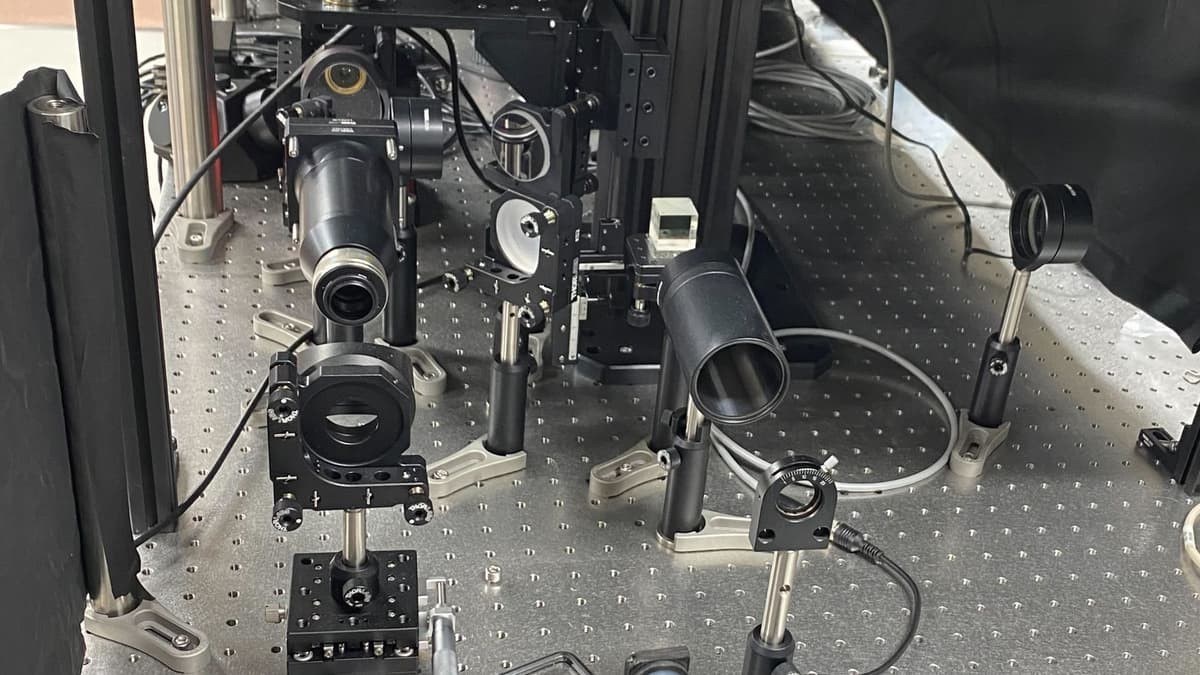Tiny 1-Pixel Camera Captures Holographic 3D Videos Beyond Visible Light and Can See Through Objects
Researchers at Kobe University in Japan have developed a groundbreaking technique for recording three-dimensional movies using just a single pixel. This innovative approach could significantly advance imaging technology and pave the way for real-time holographic video microscopy.

Figure 1. Tiny 1-pixel camera.
Unlocking the Power of Holography
While many are familiar with holograms as security features on credit cards or currency, their potential extends far beyond these applications. In science, holography plays a crucial role in areas like advanced sensors and microscopy. Figure 1 shows Tiny 1-pixel camera.
Holographic video microscopy enables real-time, 3D visualization and analysis of microscopic objects. This is typically done by capturing holograms—video sequences of light scattered by particles—and analyzing them pixel by pixel.Traditionally, lasers are used to record holograms, though newer methods can utilize ambient light or light emitted by the sample itself.
The Limitations of Current Methods
There are currently two main techniques for capturing holograms: FINCH and OSH.FINCH (Fresnel Incoherent Correlation Holography) uses a 2D image sensor and works well with visible light, allowing fast video recording. However, it requires a clear view of the sample and can’t operate outside the visible light spectrum.
On the other hand, OSH (One-Pixel Holography) can image through scattering media—like tissue—and use light beyond the visible range. But its biggest drawback has been its extremely slow speed, making it unsuitable for capturing moving objects.
A High-Speed Breakthrough
To address these limitations, Dr. Yoneda Naru and his team aimed to combine the best aspects of both methods. Their solution was a high-speed imaging setup that uses a “digital micromirror device” (DMD) to project holographic patterns onto the target object.
Dr. Yoneda explained that this DMD operates at an impressive 22,000 cycles per second (22 kHz)—a huge leap compared to earlier devices that worked at just 60 Hz. “That’s like comparing a leisurely stroll to a Japanese bullet train,” he said.
3D Imaging Through Tissue
The team demonstrated their system’s capabilities through a series of experiments. It successfully recorded 3D images of moving objects and also captured holographic movies through light-scattering materials, such as a mouse skull—functioning effectively as a microscope.
Currently, the system records at just over one frame per second. However, by using a compression technique known as sparse sampling—which avoids capturing every image detail at all times—the frame rate could reach 30 frames per second, matching standard video quality.
A New Era in Non-Invasive Imaging
The potential applications are especially promising in the fields of biology and medicine. The technology could allow researchers to observe live biological processes within tissue—without the need for invasive procedures.
“This could lead to minimally invasive, 3D biological imaging, since it can visualize objects moving behind scattering media,” the researchers explained.
Looking ahead, the team plans to enhance image quality and speed by optimizing the projected light patterns and applying deep learning to reconstruct images from the raw data.
Reference
- https://interestingengineering.com/innovation/1-pixel-camera-films-holographic-3d-movies
Cite this article:
Keerthana S (2025), Tiny 1-Pixel Camera Captures Holographic 3D Videos Beyond Visible Light and Can See Through Objects, AnaTechMaz, pp.97.












